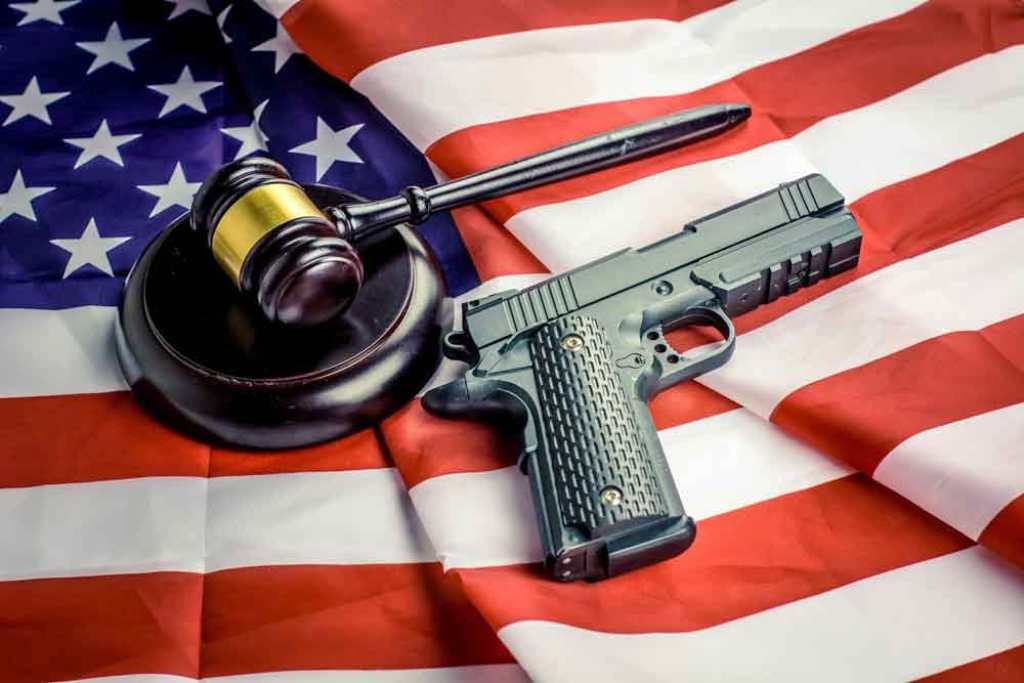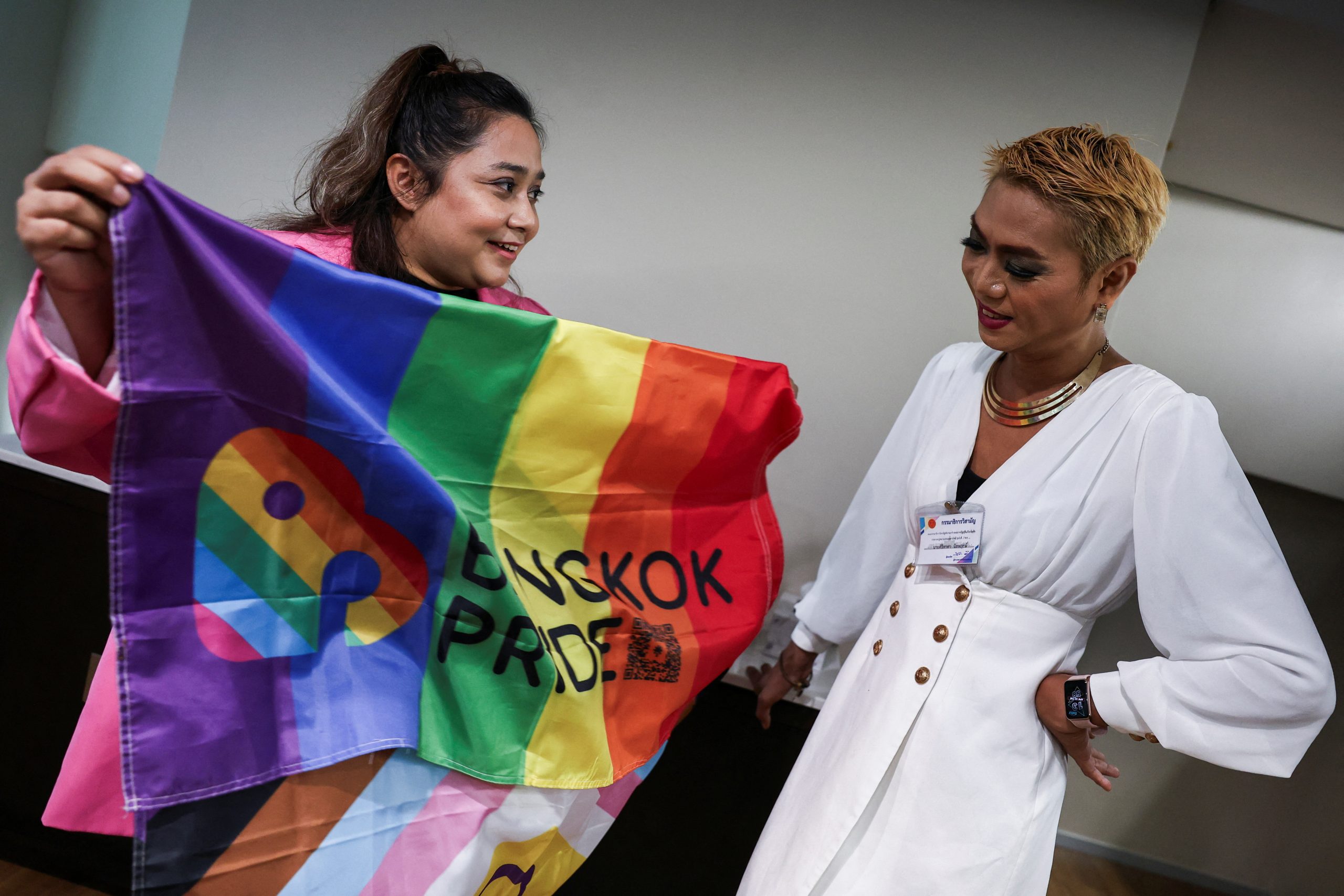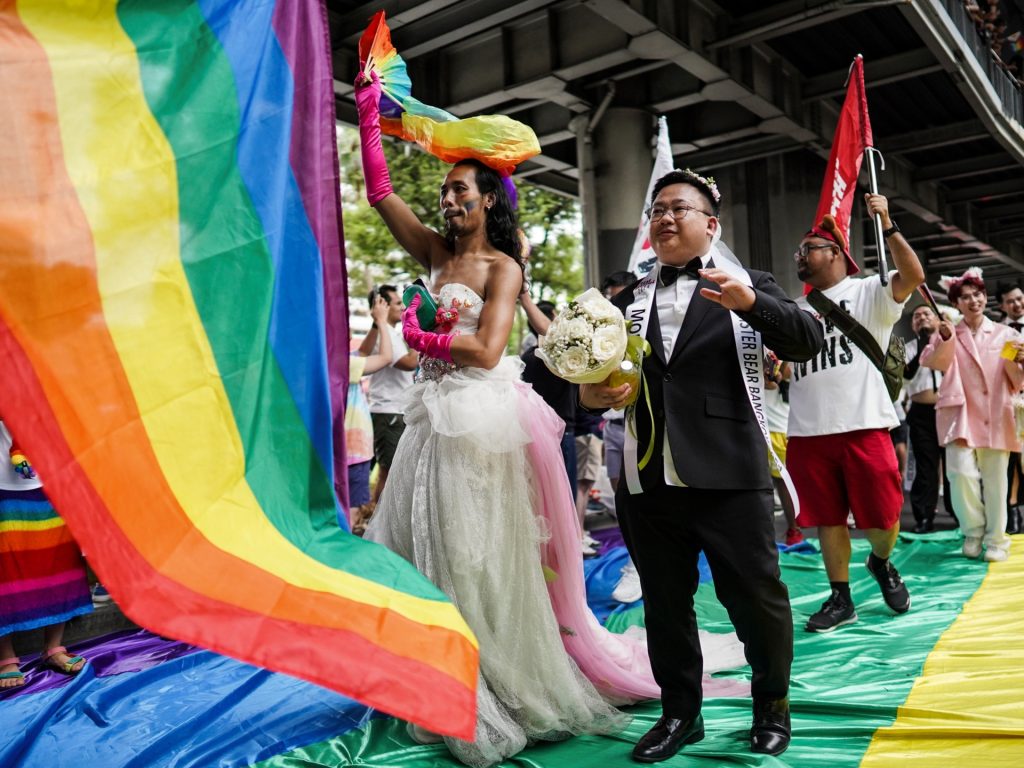Legal
What is the Penalty for Gun Charges in Illinois for 2022?

People in Illinois and throughout the US possess the constitutional right to possess arms; however, such possessions are entirely unregulated.
In addition, according to the statute of Illinois, there are certain prohibitions on the possession of a specific kind of weapon, which includes gun owners to obtain a Firearm Owners ID card (FOID) so as to be compliant with the state law.
So, suppose a person has been charged with a felony in Illinois, your FOID can be revoked. Moreover, future applications for a FOID also can be denied if you are charged with the unlawful possession of a weapon.
What is Aggravated Unlawful Use of a firearm?
People who are residents of Illinois are permitted to carry weapons like a handgun if they have a Firearm Owner Identification (FOID) card as well as a Concealed Carry License (CCL). However, the statute of Illinois states that certain weapons are illegal to possess, including switchblades, machine guns, and explosives.
Also, the statute mentions that it is completely illegal to bring weapons in public places, which do include places of worship, government buildings, and schools.
Often these violations of the law are classified as unlawful use of weapons.
Following are some of the most common CCL Violations, and these include;
-
Carrying a Concealed Weapon without a Valid CCL: If a person is caught carrying a concealed firearm without a valid CCL, you will be charged with a Class A misdemeanour, and this is considered one of the most severe misdemeanour classifications. It also essentially means that one has to face a year in jail and pay a fine of up to $2500.
-
Carrying a Concealed Weapon Under the Influence of Drugs or any kind of Alcohol: In Illinois, it is entirely illegal to possess any type of firearm when one is intoxicated. This can actually be classified as a Class A misdemeanour. Now, if a person somehow commits this more than two times, then the third time offence would be considered as a Class 4 felony where they will be incarcerated for about one to three years.
-
Carrying a Firearm in a Prohibited Place: A person can face a charge of aggravated unlawful use of a firearm in various types of situations. As per the statute of Illinois, you are not allowed to carry any type of concealed firearm in places like schools, public parks, government property, and charges. If a person is found to carry a firearm in a prohibited place such as this, they would be charged with a Class B misdemeanour where they can be incarcerated from six months in jail as well as a fine of $1500.
Apart from the law of possession, a charge of unlawful or aggravated unlawful use of a firearm can be formed when there are certainly other elements to the offence, such as follows.
-
When a person is possessing or carrying an illegal firearm that is entirely loaded and accessible immediately.
-
When a person is carrying a loaded legal firearm without a FOID card or CCL.
While unlawful weapon use can be a misdemeanour or a crime, aggravated unlawful use is at the very least a Class 4 felony.
Following are some of the elements and penalties for aggravated unlawful use of a firearm
Aggravated unlawful use of a firearm is a Class 2 felony that carries a maximum sentence of 3-7 years in prison if convicted.
Now is the time to pay close attention to this. If the prosecutor can show that the pistol was fired within a 1000-foot range in a bus, school, activity, or park, the individual will face a Class X felony charge.
-
If a person is convicted of aggravated unlawful use of a weapon and is sentenced to jail, they may be eligible for a reduction in their sentence. Good behaviour can result in a maximum reduction of 50% under Illinois’ Truth in Sentencing regulations. However, if the crime was violent, the criminal may be ordered to serve 85 to 100 percent of their sentence.
-
This is in the case of Illinois, lawyers and it varies from state to state.
Gun Ownership Laws
As per the statute of Illinois, you can carry firearms but only when a person has received a proper firearm owner identification card which is also known as a FOID card. In order to get a FOID card, you need to be at least 21 years, not have been a convicted felon and have no record of narcotics. These were some of the major requirements for getting a FOID card.
A concealed carry license is required if a person wants to carry a handgun on your person and keep it hidden (CCL). The conditions for obtaining a CCL are identical to those for obtaining a FOID card, with a few exceptions. The following are the conditions for receiving a CCL:
-
First, the person possesses a valid FOID card.
-
The person has not been convicted of any kind of misdemeanour which involves a threat or violence towards any person in the past five years.
-
The person does not have a record of two or more DUI violations in the preceding five years.
-
Additionally, he/she should also have any type of current involvement that is pending in the criminal justice system.
-
Also, they must have completed a minimum requirement of 16 hours of approved firearms training.
Now let us understand
What is the procedure for the acquisition of a firearm in Illinois?
Though Illinois has really a very strict position in relation to the possession of firearms, there is also a possible way through which a person can lawfully own a firearm. This can be done through the Federal Firearms Licensed (FFN) gun dealer or a Private Citizen transfer.
If a person acquires your firearms from the FFN gun dealer, then you must possess the following documents.
-
They must have a proper and valid FOID card.
-
They must verify with the local firearm ordinance requirements
-
The FOID card must be displayed by the user to the FFL dealer before he/she is handling the firearm
-
Also, it is important that they complete the mandatory Federal Form.
It is also informed that the FFL dealer must also notify the Illinois State Police as well as the Bureau for Firearm Services to conduct a background check in respect to the particular state and federal laws. Before the firearm is transferred to the buyer, it is also ensured that the approval has been received from ISP.
Before taking possession of the firearm, the buyer must also adhere to the Illinois waiting period. For a long gun license, they have a 24-hour waiting period, whereas, for a handgun, they have a 72-hour waiting period. For shipment, the firearm must be emptied and enclosed in a case.
What is the importance of the Waiting period before possession of a weapon or firearm in the State of Illinois?
There is a standard waiting period between the actual possession of a gun and when the person purchases it, and this is known as “cooling off.” This is generally done to give a reflection period to the buyer before you go ahead to the purchaser and use the weapon.
In the case that the gun was purchased in a fit of rage, this timeframe is estimated to give the buyer time to cool down and calm down. The hazards of a gunshot are greatly reduced when you have had time to cool down before handling a handgun.
How can Goldman and Associates Help You?
Being the best team of criminal lawyers in Chicago, Goldman and Associates are one of the leading DUI defence firms. Our criminal lawyers would fight for all of your rights against any type of authority in the state of Illinois, regardless of the size of your case. Our legal team has the essential experience and understanding to provide you with the best defence possible in any case.
In the circumstances such as aggravated unlawful use of a firearm, it is critical that you present a strong defence if you are wrongly charged. Your legal defence must be structured in such a way that the prosecutor can prove beyond a reasonable doubt that you are the one who did the crime.
Additionally, being some of the best criminal lawyers, we would also provide you with the details of all gun charges in Illinois and the penalties associated with it.
We at Goldman and Associates are well aware of the severity of the penalties and prison terms that can be. Our criminal lawyers in Chicago have dealt with a number of judges as well as police officers and are familiar with the intricacies of the criminal court system. So, if you want to secure your rights for the future, set up a meeting with us right away by clicking here to access our attorneys.

Legal
Thai Court Amends Law to Allows Wives to Sue Husband’s Lovers

Thailand’s Constitutional Court has changed the Civil Code will allow women to sue their husbands’ lovers, male or female. The Constitutional Court found on Tuesday that Section 1523 of the Civil Code breached Section 27 of the constitution, which safeguards Thais’ rights and liberties regardless of gender.
The court directed that the verdict be enforced within 360 days.
Section 1523 of the Civil Code states that husbands can sue their wives’ lovers, and wives can sue other women who publicly display an adulterous connection with their husband.
Keirov Kritteeranon, secretary-general of the Office of the Ombudsman, stated that the Ombudsman had previously urged the court to rule on the legality of Section 1523, which allowed wives to suit only female lovers.
Husbands can now sue their wives’ boyfriends regardless of gender, and there was no requirement for any public declaration of an adulterous connection, he claimed.
Once enforced, Tuesday’s Constitutional Court order, according to the Ombudsman, will correct this imbalance.
Thailand Amends Marriage Law
Meanwhile, Thailand is set to become the first Southeast Asian country to recognise same-sex marriage, after its marriage equality law was passed in the Upper House on Tuesday and is now on its approach to being promulgated before going into effect in the coming months.
LGBTQ+ advocates rejoiced as the Senate voted 130-4 to pass the bill on its final reading, with 18 abstentions. They hailed the development as a win in their long struggle for equal rights.
When the advocates who had gathered at parliament on Tuesday to witness the Senate’s final reading and vote on the measure heard the outcome, they burst out in cheers.
They next went to authorities House, where the authorities had planned a celebratory reception for them later in the day. They then went to the Bangkok Art and Culture Centre, where the party lasted until late at night.
Prime Minister Srettha Thavisin, who is on sick leave due to Covid-19, congratulated them via Zoom call from Government House.
The new law will allow any two people aged 18 or older to register their marriage and obtain the same advantages and rights as heterosexual couples. The bill refers to married couples as “two individuals” rather than “a man and a woman,” and changes their legal status from “husband and wife” to “spouses.”
LGBTQ+ people from any country can legally marry in Thailand. When the bill goes into force, foreign same-sex married partners will be eligible for a spousal visa.
The law will be sent to the government for approval before being presented to the monarch.
It will take effect within 120 days of its publication in the Royal Gazette, making Thailand the third Asian country to accept same-sex marriages after Nepal and Taiwan.
Senator Kamnoon Sidhisamarn, spokesman for the Senate’s special committee evaluating the proposed law, called it a victory for equal rights campaigners.
“There is no reason for the Upper House to disagree with the judgement made by the House of Representatives,” he told reporters. He was referring to the legislation’s passage in the Lower House prior to its submission to the Senate for approval.
The battle for same-sex marriage legislation began 23 years ago. Tunyawaj Kamolwongwat, a Move Forward Party list-MP, said that the law’s passage on Tuesday signified the beginning of a new chapter in Thai history.
Source: Bangkok Post
Court Upholds Israel’s Ban on News Agency Al Jazeera
Legal
Thailand’s Senate Passes Landmark Marriage Equity Bill Legalizing Gay Marriage

Thailand’s Senate has approved a long awaited marriage equality bill on Tuesday, making the country the third Asian country to accept same-sex couples. The Senate approved the law 130-4 with 18 abstentions.
The marriage equality bill will be sent the palace for royal clearance. The marriage equality law takes 120 days to take effect after Royal Gazette publication.
LGBTQ+ advocates welcomed the proposal a “monumental step forward” because Thailand would be the first Southeast Asian country to legalise marriage equality. Thailand is popular with travellers due to its LGBTQ+ culture and tolerance.
“This would underscore Thailand’s leadership in the region in promoting human rights and gender equality,” the Civil Society Commission of marriage equality, activists, and LGBTI+ couples said.
Prime Minister Srettha Thavisin, who wore a rainbow shirt to commemorate Pride Month, joined thousands of LGBTQ+ revellers and activists in a Bangkok parade at the start of June.
The prime minister will open Government House to commemorate the bill’s passage. Pride supporters will march from Parliament to the prime minister’s office. Mr. Srettha, who has Covid-19, will join them online after taking several days off.
Deputy Prime Minister and Commerce Minister Phumtham Wechayachai anticipates June’s Pride Month to create approximately 4.5 billion baht in economic cash flow.

Pride Month in Thailand
On Saturday, Mr. Phumtham said the government under Prime Minister Srettha Thavisin is encouraging sexual diversity and working with the commercial sector to plan more Pride Month festivities to attract LGBTQ+ tourists.
He claimed it will increase the country’s trade potential by giving SMEs business expansion chances and adding soft power value.
Mr. Phumtham claimed Poonpong Naiyanapakorn, director-general of the Trade Policy and Strategy Office, told him Pride Month celebrations will make Thailand a “pride-friendly destination” for LGBTQ+ Thai and global consumers.
This would help the country become a regional tourism hub under the government’s “Ignite Tourism Thailand” initiative to enhance tourism in 55 “worth visiting” provinces.
He added that such festivals will support downstream industries like event planners, food and beverage companies, hotels, and transport services and disperse cash to local areas. Mr. Phumtham stated Thailand’s Pride Month began in 1999. Bangkok, Chiang Mai, Phuket, and Chon Buri host parades, festivities, and campaigns.
The Tourism Authority of Thailand (TAT) expects approximately 860,000 people to attend this year’s festival and contribute at least 4.5 billion baht for the economy. LGBT Capital estimates that the world’s LGBTQ+ population has US$4.7 trillion in purchasing power and Thailand’s sexually varied population has US$26 billion.
LGBTQ+ rights in Thailand are improving, but there’s still much to do. The LGBTQ+ community in Thailand is notably strong in Bangkok and Pattaya.
Strong legal recognition allows transgender people to change their names and titles. Many LGBTQ+ couples lack legal rights since same-sex marriage is banned.

LGBTQ+ rights in Thailand
Thailand is becoming more accepting despite these difficulties. LGBTQ+ rights are gaining favour. Activists want legal changes to guarantee equality.
Pride parades are becoming increasingly visible, demonstrating diverse acceptance. While challenges remain, LGBTQ+ rights in Thailand are improving as awareness and acceptance expand.
Legal
Protecting Your Designs: Intellectual Property Rights in the Jewelry Manufacturing Industry

The jewelry manufacturing industry is a vibrant and highly competitive sector where creativity and innovation are paramount. Designers invest significant time, effort, and resources into crafting unique pieces that appeal to consumers’ tastes and preferences. However, this industry faces a persistent challenge: the protection of original designs from imitation and unauthorized use.
Intellectual property rights (IPR) play a crucial role in safeguarding jewellery designs, ensuring that creators receive recognition and financial benefits from their work. This article delves into the various forms of intellectual property rights pertinent to the jewelry manufacturing industry and offers insights on how designers can protect their creations.
Understanding Intellectual Property Rights
Intellectual property rights are legal mechanisms that grant creators exclusive rights to their inventions, designs, and artistic works. These rights encourage innovation by providing creators with the means to control the use of their creations and to benefit financially from them. In the context of jewelry design, the most relevant forms of IPR are copyrights, trademarks, patents, and design rights.
Copyrights
Copyright protection extends to original works of authorship, including artistic creations such as jewelry designs. Under copyright law, the designer of a piece of jewelry automatically acquires the exclusive right to reproduce, distribute, and display the design upon its creation. This protection does not require registration, although registering the copyright with the appropriate governmental body, such as the U.S. Copyright Office, can provide additional legal benefits and evidence of ownership.
For jewelry designers, copyright protects the aesthetic aspects of a piece, such as the specific design, patterns, and artistic expressions. However, it does not cover the functional elements or the materials used. The duration of copyright protection varies by country, but it typically lasts for the life of the creator plus an additional 50 to 70 years.
Trademarks
Trademarks protect symbols, names, logos, and slogans that distinguish goods and services in the marketplace. For jewelry manufacturers, a trademark can cover the brand name, logo, or even a unique product line name.
Registering a trademark with the appropriate authority, such as the United States Patent and Trademark Office (USPTO), provides nationwide protection and the exclusive right to use the mark in connection with the specified goods or services.
A strong trademark helps consumers identify and differentiate a brand’s products from those of competitors, fostering brand loyalty and reducing the risk of confusion in the marketplace. It also provides legal recourse against counterfeiting and unauthorised use of the brand’s identity.
Patents
Patents protect new inventions and technical innovations. In the jewelry industry, this could include innovative manufacturing processes, unique mechanisms for adjustable or interchangeable jewelry, or novel materials and techniques. A patent grants the inventor the exclusive right to use, make, and sell the invention for a limited period, usually 20 years from the filing date of the patent application.
Obtaining a patent involves a rigorous process of proving that the invention is novel, non-obvious, and useful. For jewelry designers, the primary benefit of patent protection lies in safeguarding their innovative techniques and mechanical features, which can provide a competitive edge in the market.
Design Rights
Design rights specifically protect the visual appearance of a product, including its shape, configuration, pattern, and ornamentation. These rights are particularly relevant to the jewelry industry, where the aesthetic appeal of a product is a key selling point. In many jurisdictions, design rights must be registered to be enforceable, though some countries offer unregistered design rights that provide limited protection.
Registering a design right involves submitting detailed representations of the design to the relevant authority, such as the European Union Intellectual Property Office (EUIPO) for protection within the EU. Registered design rights typically offer protection for up to 25 years, subject to renewal fees.
Steps to Protect Jewelry Designs
- Document Your Designs: Maintain detailed records of your design process, including sketches, prototypes, and finished pieces. This documentation can serve as evidence of originality and ownership in case of disputes.
- Conduct Searches: Before launching a new design, conduct thorough searches to ensure it does not infringe on existing intellectual property. This can prevent legal issues and costly disputes.
- Register Your IP: Where applicable, register your copyrights, trademarks, patents, and design rights with the appropriate authorities. Registration enhances protection and provides legal advantages in enforcing your rights.
- Use NDAs and Contracts: When working with manufacturers, suppliers, and collaborators, use non-disclosure agreements (NDAs) and detailed contracts to protect your designs and outline the terms of use. ( Check out EJ: A Jewelry Manufacturer with NDA’s.
- Monitor the Market: Regularly monitor the market for potential infringements. This can involve online searches, attending trade shows, and staying informed about competitors’ activities.
- Take Legal Action if Necessary: If you discover an infringement, take prompt legal action to enforce your rights. This may involve sending cease-and-desist letters, pursuing litigation, or seeking alternative dispute resolution methods.
Challenges and Considerations
While intellectual property rights offer significant protection, there are challenges and limitations to consider. The cost and complexity of obtaining and enforcing IPR can be prohibitive, especially for small designers and startups. Additionally, the global nature of the jewelry market means that protections obtained in one jurisdiction may not be recognized elsewhere, necessitating international strategies for comprehensive protection.
Moreover, the fast-paced nature of fashion and jewelry trends can make lengthy registration processes impractical for certain designs. In such cases, relying on unregistered design rights or focusing on brand protection through trademarks may be more viable strategies.
Conclusion
Intellectual property rights are a vital tool for protecting the creativity and innovation that drive the jewelry manufacturing industry. By understanding and strategically utilizing copyrights, trademarks, patents, and design rights, designers can safeguard their creations, enhance their competitive edge, and ensure they reap the financial rewards of their ingenuity. As the industry continues to evolve, staying informed about IPR and adapting to emerging challenges will be crucial for sustaining success in the dynamic world of jewelry design.
People Also Reading:
Law Firm Chastised for Using OpenAI ChatGPT for Legal Research
Law Firm Chastised for Using OpenAI ChatGPT for Legal Research
-

 News3 years ago
News3 years agoLet’s Know About Ultra High Net Worth Individual
-
Entertainment2 years ago
Mabelle Prior: The Voice of Hope, Resilience, and Diversity Inspiring Generations
-

 Health3 years ago
Health3 years agoHow Much Ivermectin Should You Take?
-

 Tech2 years ago
Tech2 years agoTop Forex Brokers of 2023: Reviews and Analysis for Successful Trading
-

 Lifestyles3 years ago
Lifestyles3 years agoAries Soulmate Signs
-

 Movies2 years ago
Movies2 years agoWhat Should I Do If Disney Plus Keeps Logging Me Out of TV?
-

 Health3 years ago
Health3 years agoCan I Buy Ivermectin Without A Prescription in the USA?
-

 Learning2 years ago
Learning2 years agoVirtual Numbers: What Are They For?